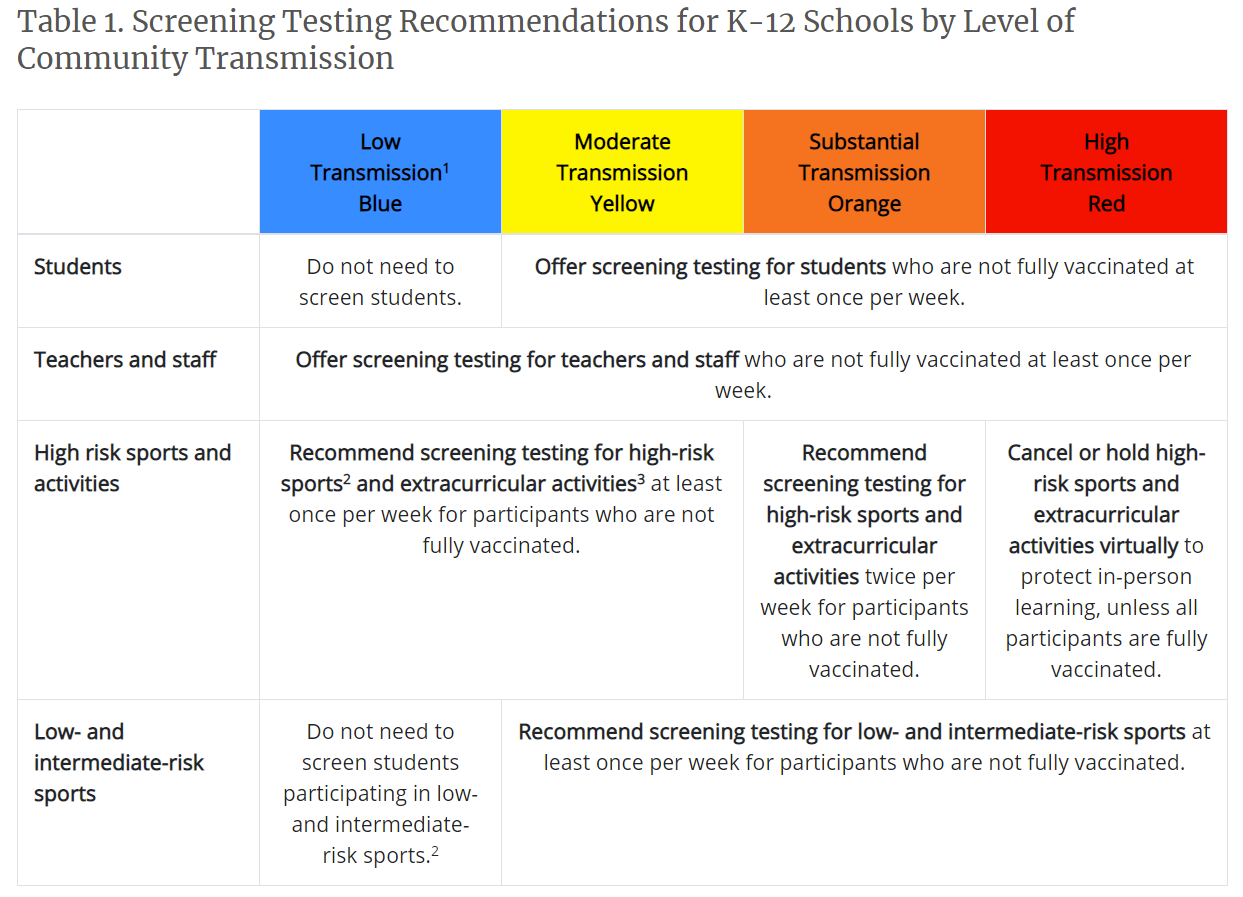CDC says schools in session
This morning the CDC updated their recommendations for K-12 schools in Fall. I threw together a few high-level thoughts and reactions:
The CDC said we need a layered approach. Eligible kids need to be vaccinated. If they aren’t (or too young to be vaccinated) kids need to: socially distance; wear masks; wash hands; have ventilated classrooms; AND implement surveillance testing. This is not surprising. A swiss cheese model has been our approach all along. And science continues to show that, if implemented correctly, it works in schools. I think the real question is if, and how, these things need to change because of Delta. A variant that has a 1000% higher viral load and is 200% more transmissible than the wild strain changes the game. And, this was not addressed in the CDC guidance. In fact, the word “Delta” didn’t appear once in the entire report. I don’t think it’s wise to ignore our changing landscape.
The CDC said schools should open for 100% in-person learning. This was also expected. The American Academy of Pediatrics has continually advocated for schools to be open. And, I agree. There is indispensable value in structured, in-person learning. There is a really important caveat here, though, that I fear will be lost in implementation: Schools should open if (and that’s a big if) done in a data-driven, evidenced based manner. This will allow the kids to receive both the value of in-person learning and safety needed from a pandemic. Can schools figure out how to do this while, concurrently, navigating political pressures and parents? This will be an interesting to watch.
The CDC placed a lot of responsibility on the schools and/or districts. Again, we’re seeing an individualistic approach from the CDC making schools micro health departments. Schools are now responsible to monitor levels of community transmission (i.e., low, moderate, substantial, or high), monitor local vaccine coverage, and use surveillance testing to detect and track cases. This is a lot of work and responsibility. And I’m afraid it could be paralyzing.
Related to #3, the CDC didn’t provide schools or even parents with guidance on what to do with these three metrics. And without this guidance, decision making will be incredibly difficult. For example, what does a school do if the transmission is “moderate”, vaccination coverage is 44%, and they can’t afford the Cadillac version of surveillance testing? THEN, what happens when (not if) these metrics shift? I know what an epidemiologist would do, but schools just don’t have that level of training (and nor should they). One way the CDC could help would be to create a toolkit; a dashboard of sorts to help navigate decision making.
The CDC did provide guidance on surveillance testing for schools. I was really happy to see this. This was blaringly missing from their surveillance testing landing page for months. These recommendations are helpful.
Bottom Line:
This guidance is unsurprising. It now puts a lot of pressure on schools. I feel for the parents that need to advocate for schools and politicians to do the right thing in order for their kids to be safe. Today’s guidance also solidifies my opinion that the CDC is disconnected from reality: There is a big difference between what should be done and what can (and will) actually be implemented in the real world.
Love, YLE






